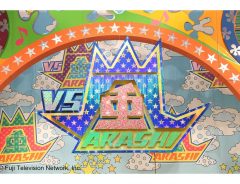- Tags:
- Comedy / Game show / Japanese Television
Related Article
-

Japanese action figure hobbyist’s skits may seriously discourage you from looking for Waldo
-

Interview with Yuuki Banjo from “VS ARASHI” – General Director
-

Words on the cover of this black notebook has Twitter in stitches: “Genius idea!”
-

8K VR Interactive Drama “Hanabi” Lets You Imagine Living With An Android Girl
-

Get Your Hands On Cool Kazuo Umezu Goods At Limited Online Shop
-

Train announcement thrills girl but Dad’s one-liner wins praise: “I cracked up!”; “Best dad!”



As a teenage suburbanite, I spent many a weekend flipping endlessly through daytime television because I had already finished every video game I owned and was magnificently bored. On one occasion, I noticed a new channel, Spike TV, on offer from my cable provider. It was, at the time, running some kind of bizarrely inhumane, but incredibly fun game show.
The show was named MXC—Most Extreme Elimination Challenge. It featured contestants competing on extremely complicated obstacle courses for some type of prize that I never quite figured out. It was comedically dubbed, but the sheer tyranny of will the contestants displayed as the wiped out was its selling grace. I knew, despite myself, it wasn’t cool to laugh at other’s misfortune, but I couldn’t help myself. See what I mean:
After watching a few episodes and bothering everyone I knew about it, I eventually learned that MXC was an Americanized version of a famous Japanese game show, Takeshi's Castle. In the following years, YouTube grew into the iconic web service that it is today, and I realized through the website that Japan offered a plethora of outstandingly odd, sometimes obscene game shows. In short, these programs inspired me to pick up a second language so I could one day fully participate in the oddity of the Japanese game show.
Brain Wall
A subgame of a Fuji Television variety show とんねるずのみなさんのおかげでした, The Tunnesls' Thanks to Everyone, Brain Wall is a straightforward game. Safety-gear clad contestants must avoid being knocked over by a gigantic, pink, styrofoam wall advancing on tracks towards them.
In the game, which is also known colloquially as Human Tetris in online circles, the gigantic walls have oddly-shaped cut-outs in various poses. Some poses are simple, say a person sitting with legs extended, while others are practically impossible contortions.
As you can see, it's not so simple. Points are awarded to contestants who pass through the wall unscathed. But most, it seems, end up in the water, wet and pointless.
Gaki No Tsukai
Downtown no Gaki no Tsukai ya Arahende!!—Downtown's We Aren't Errand Boys—is a perenially popular comedy-variety program in Japan. Having aired over 1000 episodes since beginning in 1989, it is likely the most well-known such program in all the country.
Amongst other things, the series is famous for outlandish sketches which often take the form a game show or quasi-game show. The best of which, IMHO, is Silent Library.
The rules to Silent Library are simple; everyone must be quiet. While sitting at a table, contestants draw from a stack of cards, and whoever draws the skull and crossbones cards is punished. Just one problem, the punishments are often jaw-droppingly bizarre. Have a look:
While I still don’t understand the point to any of this, its pretty amusing. This one is good, too.
Like many of the more interesting Japanese game shows, Silent Library inspired international spin-offs. While the original is by far the best, this scene from the American version is also pretty amazing.
Candy or not Candy
As the name suggests, Candy or not Candy involves contestants determining whether an everyday object is actually a beautifully designed sweet or not. At first glance, it seems like a pretty difficult game. Owing to the high-quality of Japanese craftsmanship, many confections are indistinguishable from the objects they were modeled upon. Unfortunately for the guests, there is only one way to find out what the item is: attempting to take a bite.
Candy or Not Candy is definitely fun, and surprising, to watch. However, I could imagine it is difficult to find contestants who are willing to take a bite out of a shoe in order to find out if it is edible or not.
Escape Game DERO!
The "deadly and dangerous" DERO certainly raised the stakes for games shows across the world. In this puzzle game, contestants are put into perilous situations and forced to solve puzzles in order to escape. Should the fail, their life could be on the line…
The contest includes several different situations. There is a bottomless pit above which contestants are placed on a slowly retracting beam. There is also a bomb diffusing situation, a quicksand scenario, and several others which essentially revolve around solving puzzles based upon the hints provided by the announcers.
Fortunately, YouTuber Across Japan has subtitled several episodes of the series in order to make them something of a Japanese study guide. And why not? It’s certainly an entertaining way to learn a second language.